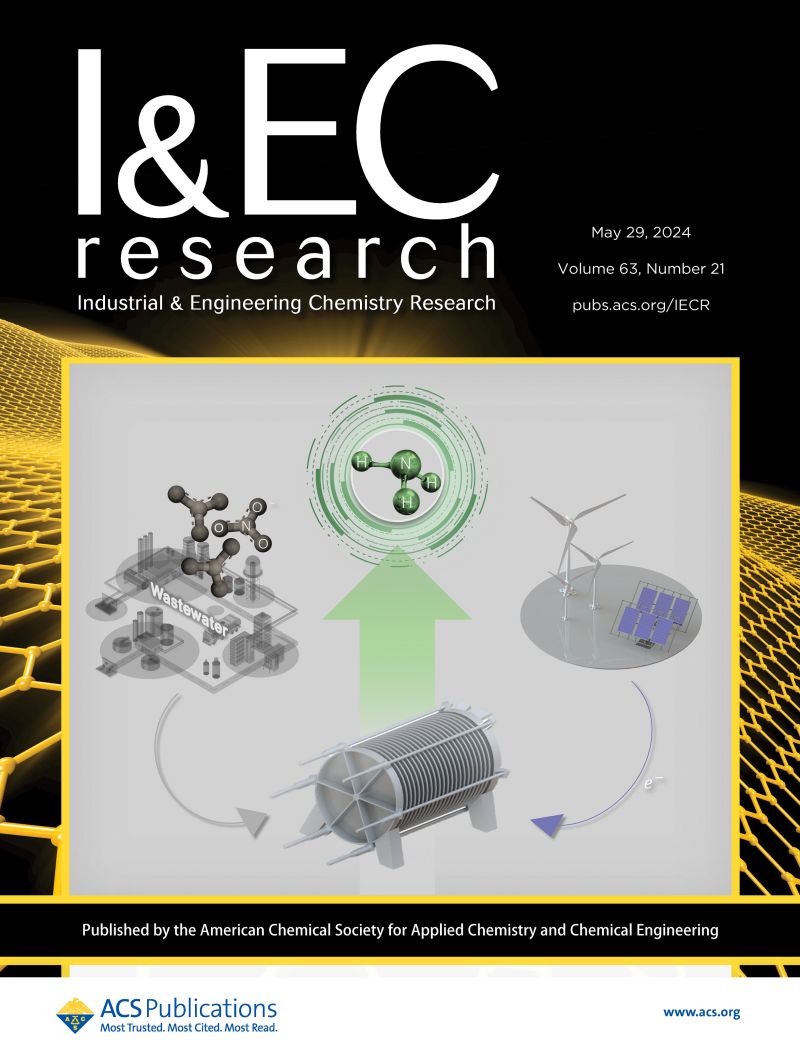基于多胺的甲苯二异氰酸酯焦油渣氨解:高效转化及机理探讨
IF 3.9
3区 工程技术
Q2 ENGINEERING, CHEMICAL
引用次数: 0
摘要
焦化过程产生的焦油渣是甲苯二异氰酸酯(TDI)工业中重要的危险废物之一。TDI焦油渣的高效降解和利用已成为全球TDI企业面临的严峻挑战。传统的填埋和焚化工艺不能很好地利用焦油渣中的有机资源,也会造成土壤和空气污染的危险。本研究探索利用多胺作为TDI焦油残渣增值的高效替代方法进行氨解。氨解具有高降解率和TDA产率,不需要添加催化剂或溶剂,呈现出潜在的原子经济过程。以二乙烯三胺(DETA)为原料,在优化条件下,TDA产率约为60%,并可获得高附加值的副产物1-(2-氨基乙基)-2-咪唑酮(AEI)。密度泛函理论(DFT)计算和实验结果支持一个三步机制,包括胺对尿素键的顺序攻击,然后是环化。这项工作表明,氨解法作为一种更清洁、有效的TDI焦油残渣化学回收途径的潜力。本文章由计算机程序翻译,如有差异,请以英文原文为准。
Aminolysis of Toluene Diisocyanate Tar Residue Based on Polyamines: Efficient Conversion and Mechanism Exploration
Tar residue produced in the phosgenation process is one of the important hazardous wastes in the toluene diisocyanate (TDI) industry. The efficient degradation and utilization of TDI tar residue have become a tough challenge for TDI enterprises worldwide. Traditional landfill and incinerator processes do not properly use the organic resources in tar residue, and they also pose a danger of soil and air contamination. This study explores aminolysis using polyamines as a highly efficient alternative to TDI tar residue valorization. Aminolysis offers high degradation rates and TDA yields without requiring added catalysts or solvents, presenting a potentially atom-economical process. Using diethylenetriamine (DETA), a TDA yield of approximately 60% alongside the value-added coproduct 1-(2-aminoethyl)-2-imidazolidone (AEI) was achieved under optimized conditions. Density functional theory (DFT) calculations and experimental results support a three-step mechanism involving a sequential amine attack on urea linkages, followed by cyclization. This work demonstrates the potential of aminolysis as a cleaner and effective route for the chemical recycling of TDI tar residue.
求助全文
通过发布文献求助,成功后即可免费获取论文全文。
去求助
来源期刊

Industrial & Engineering Chemistry Research
工程技术-工程:化工
CiteScore
7.40
自引率
7.10%
发文量
1467
审稿时长
2.8 months
期刊介绍:
ndustrial & Engineering Chemistry, with variations in title and format, has been published since 1909 by the American Chemical Society. Industrial & Engineering Chemistry Research is a weekly publication that reports industrial and academic research in the broad fields of applied chemistry and chemical engineering with special focus on fundamentals, processes, and products.
 求助内容:
求助内容: 应助结果提醒方式:
应助结果提醒方式:


